Amsterdam has had a considerable Jewish population for the last several centuries, and the city has always been culturally and historically important for Jews. So it’s perhaps unsurprising that Amsterdam has its own Jewish Quarter, known as the Jodenbuurt, roughly clustered between the Waterlooplein, the Nieuwmarkt, and northern part of the Plantage.
What might be more surprising, however, is that the city’s most famous Jewish resident, Anne Frank, did not live in Amsterdam’s Jewish Quarter at all.
While her world-renowned secret annex is located next to the Westerkerk in the Jordaan neighborhood, the story of the Frank family and their hiding during the Nazi occupation is a central part of the city’s Jewish heritage.
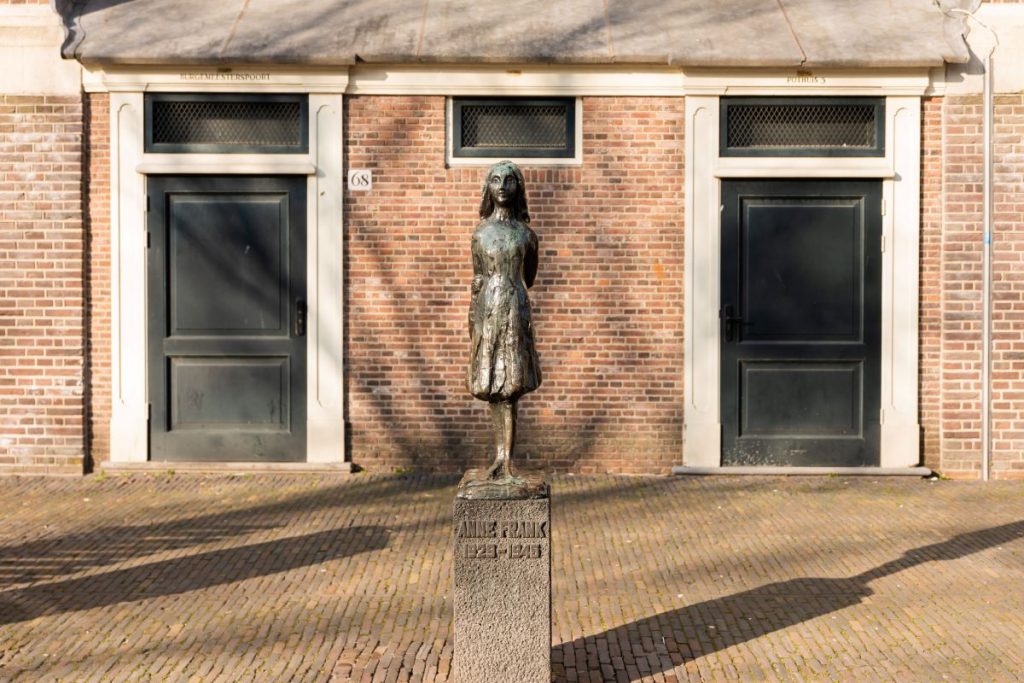
The Jewish Quarter’s cultural and historic highlights
Jewish Historical Museum
If you’re planning to spend a few hours exploring the Jewish Quarter, your best bet is to start at the Jewish Historical Museum. There, you’ll get an overview of the history of Jews in the Low Countries from 1600 through to today.
The museum’s information and artifacts are grouped into four synagogues–most of which are to be found in the Great Synagogue and the New Synagogue – which make for an impressive backdrop to an informative visit.
Local tip:
- The entrance fee to the Jewish Historical Museum also includes entry to the three attractions below, as long as you visit all four within a week. Pick up an audio guide at all locations to learn more about what you’re seeing and experiencing.
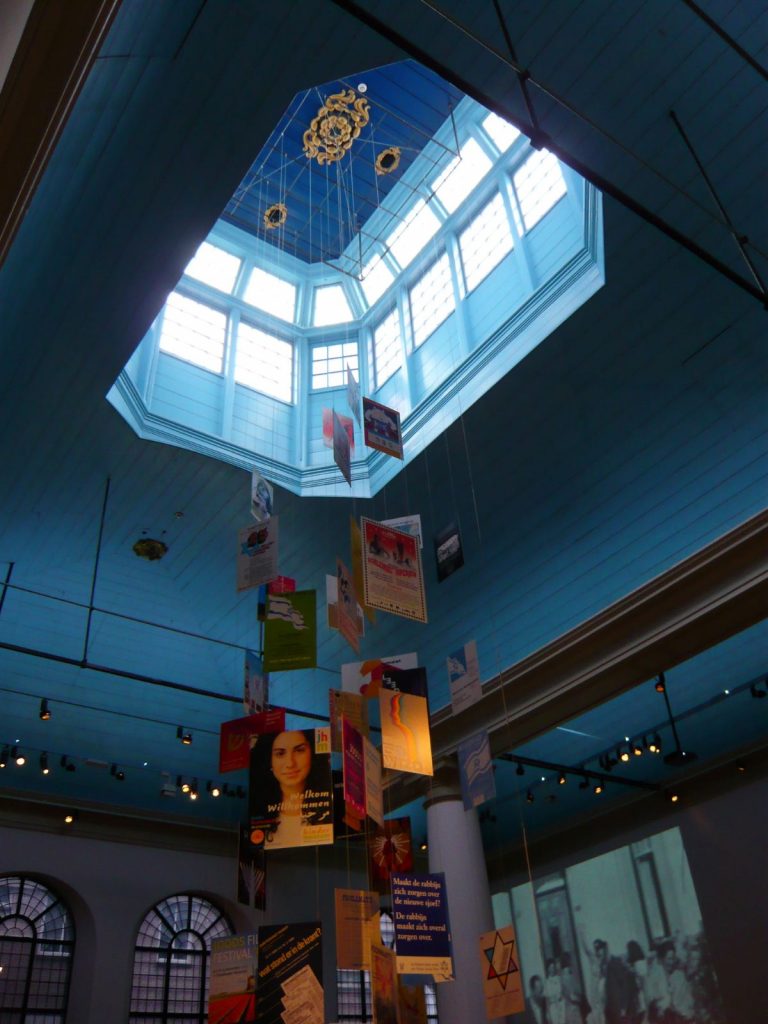
Portuguese Synagogue (Esnoga)
On the opposite side of the main street, you’ll come to the Portuguese Synagogue: a vast, airy place of worship that was built in the 17th century by Sephardic Jews and has been remarkably well preserved ever since. It still holds services for the Jewish population of Amsterdam, but when not in use it’s open to visitors.
If you arrive after dark, the synagogue is often illuminated by hundreds of candles, creating a magical atmosphere. In the Treasure Chambers, marvel at the ornate Torah scrolls, ceremonial silver objects, and other historical artifacts.
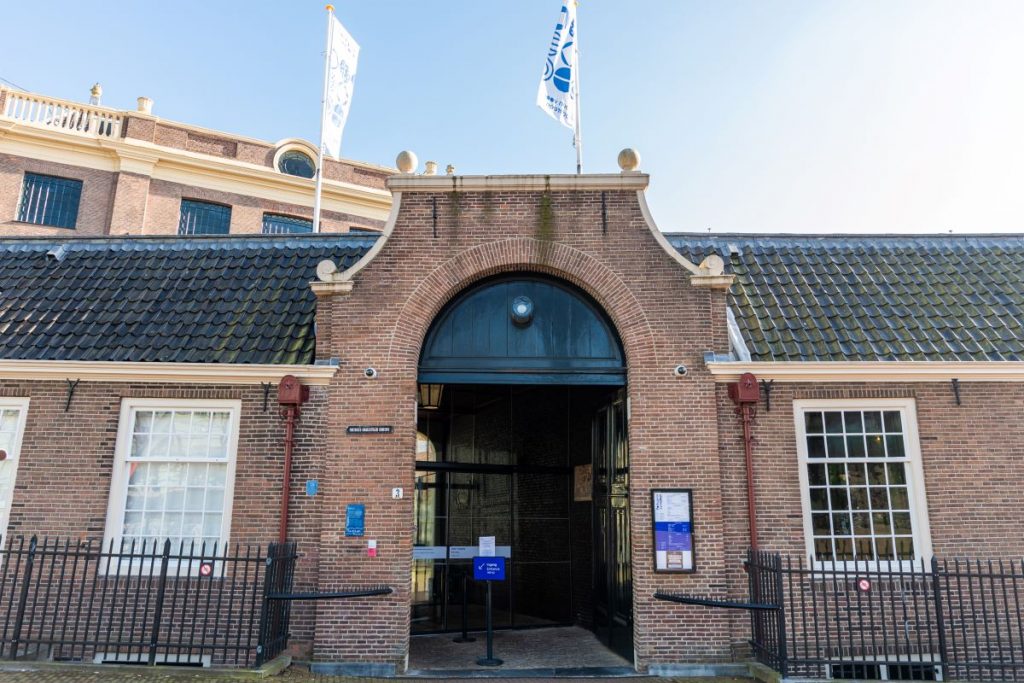
Hollandsche Schouwburg
From the Portuguese Synagogue, walk towards the Plantage neighborhood through the
Wertheimpark, pausing for a moment to reflect at Auschwitz Memorial. Then continue down Plantage Middenlaan until you reach the Hollandsche Schouwburg.
Once a popular theater, during World War II the Nazis used it as a deportation center for Jews. After the war, in 1961, the theater was converted into an education center and memorial to the thousands of Dutch Jews who were murdered during the Holocaust.
Step outside into the courtyard to hear the stories of individual people and their families who became victims of this dark chapter in Dutch history.

National Holocaust Museum
On the opposite side of Plantage Middenlaan, you’ll find the National Holocaust Museum – the last of the four cultural sites included in your Jewish Historical Museum ticket. The National Holocaust Museum features artifacts, personal stories, and exhibitions highlighting the devastating impact of Nazi persecution on the Dutch Jewish community.
Perhaps the most moving part of the exhibition is the suitcases installation: a poignant symbol of the journeys that Jewish people were forced to take, often with little or no understanding of their final destination.
The installation highlights the scale of the deportations and the human cost of the Holocaust, emphasizing that behind each suitcase was a story of someone with a name, a life, and a family.

Resistance Museum
Around the corner from the Holocaust Museum, the Resistance Museum (Verzetsmuseum) offers a compelling insight into the lives of those who resisted the Nazi occupation of the Netherlands during World War II.
Through immersive exhibits, the museum tells the stories of 100 ordinary people who made extraordinary choices in the face of oppression, ranging from underground fighters and those who helped hide Jews, to individuals engaged in acts of civil disobedience.
The museum also presents the broader context of daily life under Nazi rule, showing how people in the Netherlands navigated survival, collaboration, and resistance in a time of great danger and uncertainty.
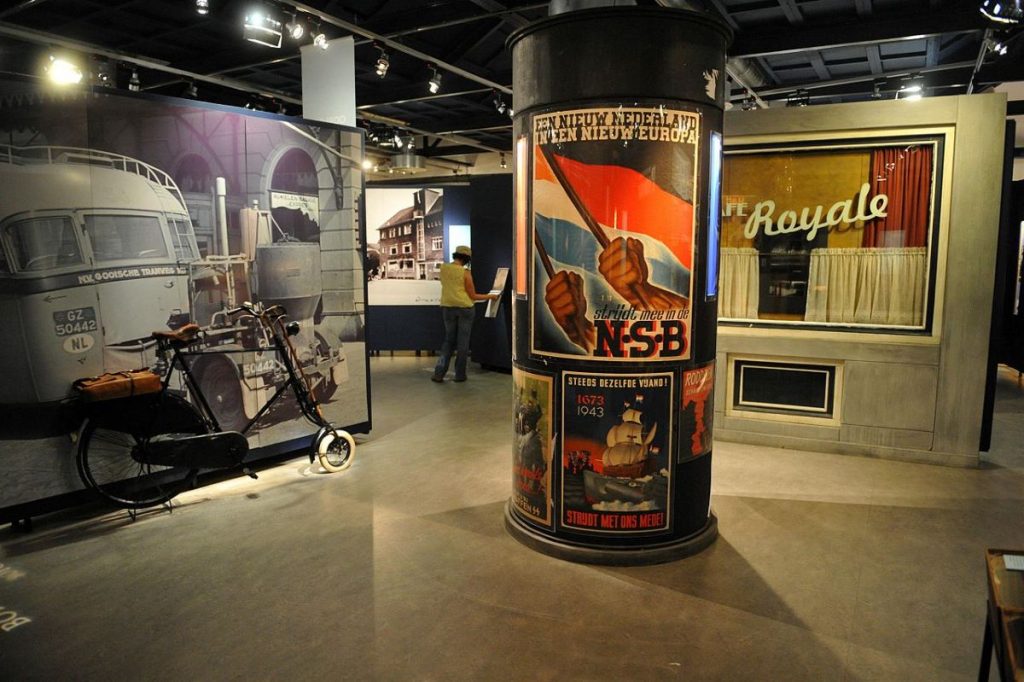
Holocaust Names Monument
Back near the beginning of your tour of the Jewish Quarter, you’ll come across the newly constructed (in 2021) monument that lists the names of the 102,000 Jewish victims (as well as Roma and Sinti) who were deported and murdered during the Holocaust.
The Holocaust Names Monument was designed by architect Daniel Libeskind and is made up of several walls forming a maze-like structure, with each brick bearing the name, date of birth, and age of a Holocaust victim.
Angular mirrors above the brick walls add to the sensation of disorientation that comes when walking through this maze of a monument.
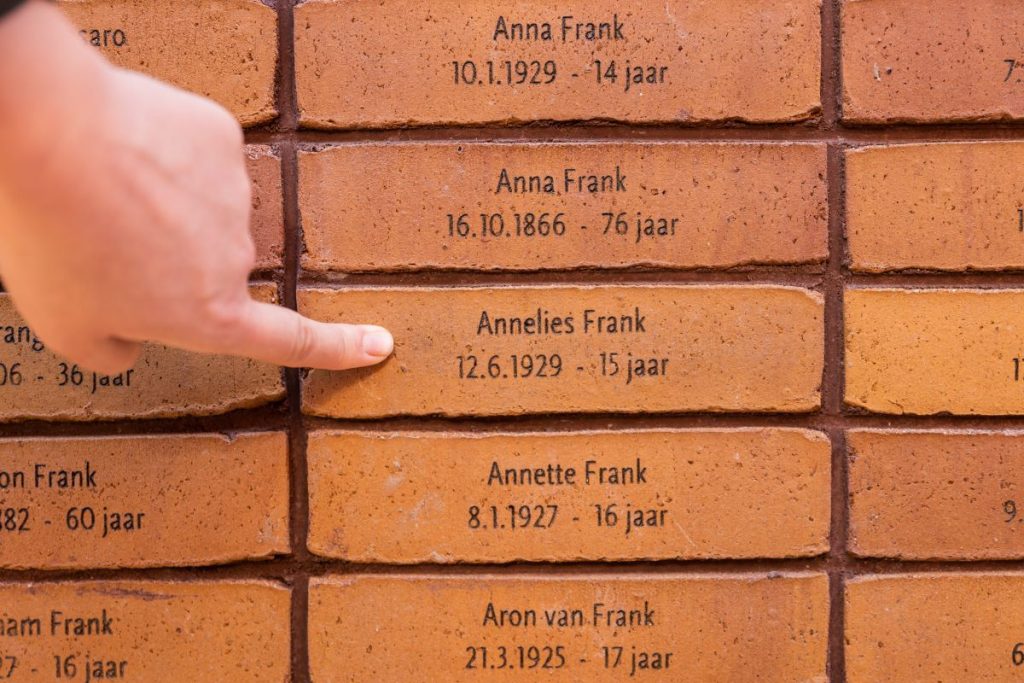
Jerusalem of the west: Origins of Amsterdam’s Jewish community
The Jewish population began arriving in Amsterdam in large numbers during the late 16th and early 17th centuries, primarily fleeing persecution in Spain and Portugal. Later in the 17th century, Ashkenazi Jews also made their way to the city from Central and Eastern Europe.
Jews in Amsterdam enjoyed a relatively tolerant environment in the early years compared with other parts of Europe. The city became known as the “Jerusalem of the West” for its thriving Jewish community, which contributed significantly to the city’s commerce, arts, and intellectual life.
But 20th century Jewish history is well-known: the community suffered greatly during World War II, when more than 75% of Dutch Jews were deported and murdered during the Holocaust.
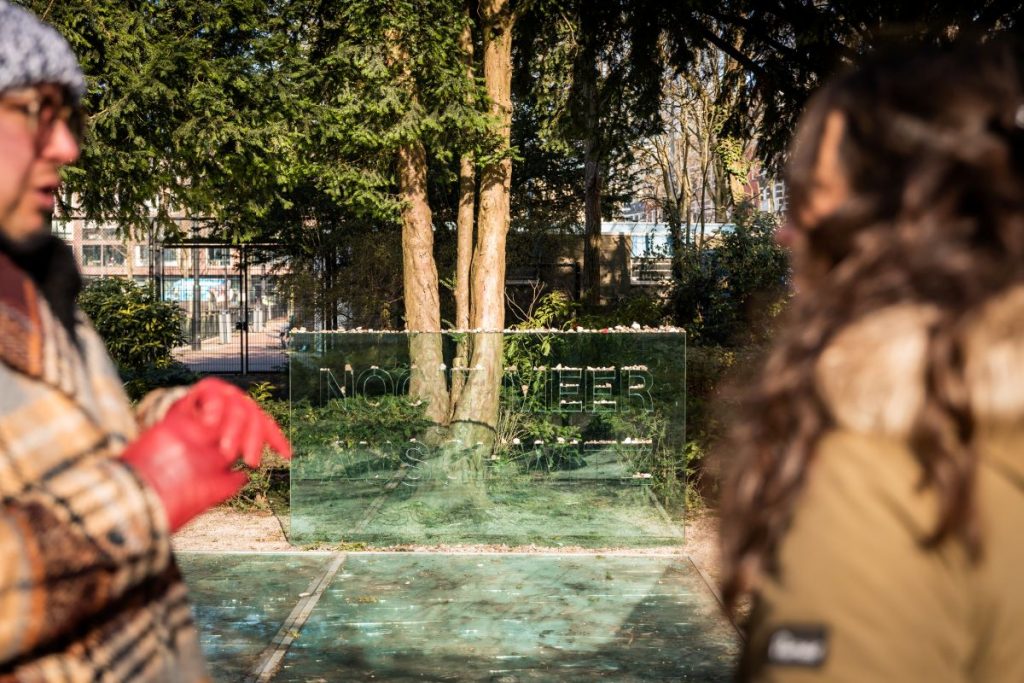
The Jewish Quarter today
The Jewish Quarter plays a dual role in Amsterdam. It’s a vibrant part of city life, with shops, restaurants, and entertainment. It’s also a place of quiet reflection, with museums and memorials dedicated to remembering the Holocaust’s devastating impact.
Insider’s tip:
- Look down at the sidewalk and you’ll see thousands of Stolpersteine – small, brass-plated cobblestones that mark the last known residence of victims of the Holocaust. Although you’ll see these all over Europe – from Sweden to France – you’ll stumble across Stolpersteine even more commonly in Amsterdam’s Jewish Quarter.
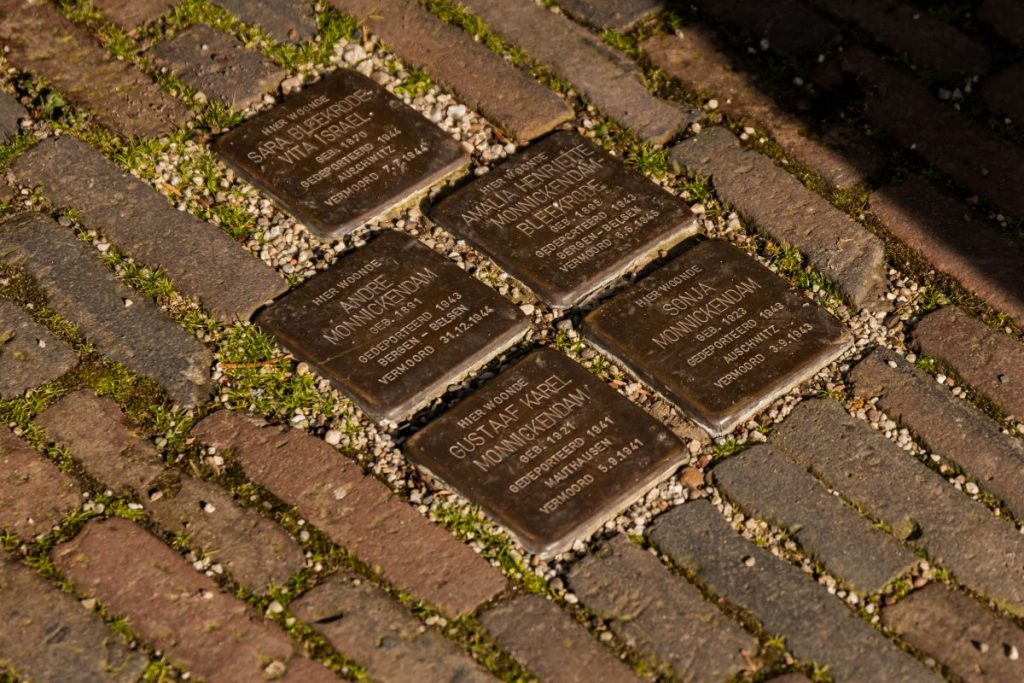
Ready to turn your trip into an unforgettable experience?
Discover the full range of expertly led experiences at Take Walks Tours where passionate local guides bring history, stories, and iconic sights to life. From world-famous landmarks and museums to immersive food and cultural experiences, these small-group guided tours offer deeper insight, seamless access, and unforgettable moments you’d miss on your own.
Explore with experts who know it best, and see the country through local eyes.
